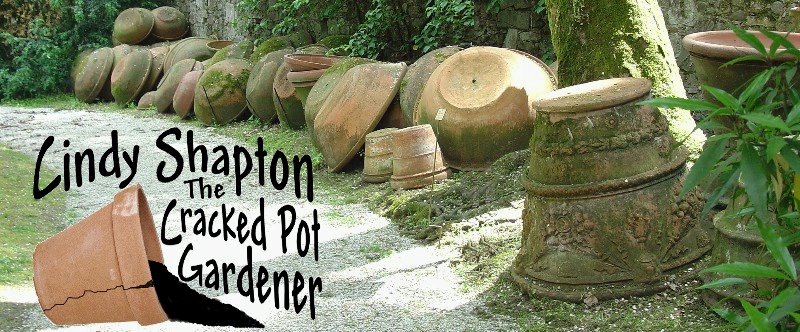 Annie, the garden dog and I like to head out early to beat the heat and enjoy the quiet of the morning in the garden. No time to fix a proper breakfast, we girls usually just forage. This morning Annie and I enjoyed ripe blackberries still covered in dew as we watered and pulled weeds. Annie likes to pick the low ones.
Annie, the garden dog and I like to head out early to beat the heat and enjoy the quiet of the morning in the garden. No time to fix a proper breakfast, we girls usually just forage. This morning Annie and I enjoyed ripe blackberries still covered in dew as we watered and pulled weeds. Annie likes to pick the low ones.We or I should say (Annie won’t eat greens) I followed that up with purslane, a green that is often confused with a weed. Well, okay it is considered a weed in the real world but here at “The Wheel is Off the Bus” Garden (my pet name for my gardens for 2010), purslane is growing happily in the herb garden and even in pots handy to the kitchen so I don’t have to travel far to harvest some.
 Purslane, Portulaca oleracea, an earth hugging succulent that has reddish thick, water filled stems and fat paddle shaped ½-2” leaves. According to “Wildman Steve Brill” Purslane was once a food crop in India. I have no idea how it got here but it grows freely in meadows, lawns and gardens. It loves hot dry weather and doesn’t skip a beat in our southern growing conditions.
Purslane, Portulaca oleracea, an earth hugging succulent that has reddish thick, water filled stems and fat paddle shaped ½-2” leaves. According to “Wildman Steve Brill” Purslane was once a food crop in India. I have no idea how it got here but it grows freely in meadows, lawns and gardens. It loves hot dry weather and doesn’t skip a beat in our southern growing conditions.You can find purslane growing from spring through fall. It blooms a yellow flower with 5 petals and one plant can have 50 thousand teeny, tiny seeds which are edible and viable for up to 30 years if undisturbed.
If identification is unclear, break open a stem, if it exudes a white milky sap it could be a poisonous spurge plant warns Brill which sometimes grows nearby. Purslane stems are filled with water. In fact, if you are weeding purslane, remove the plant from the garden as the water in the stems keeps the plant alive so it can quickly form seeds to disperse in an effort to pro-create. How cool is that?
The stems and leaves can be steamed, sautéed like spinach, eaten raw in salads, rolled in tortillas or chopped and added to soups for a thickening agent much like okra. In Russia folks dry and can this green.
Filled with Omega-3 fatty acids, vitamin C, beta-carotene, calcium, magnesium, potassium and iron, purslane is a healthy foodstuff that may lower cholesterol and blood pressure and help with joint inflamation. The best news is it grows wild. Good to know if you are out early and need something good to eat for breakfast!


1 comment:
Wow, those blackberries are so large! Amazing! I have lots of purslane growing in my garden. I don't eat it. I can't get over the fact it's a weed in my mind.
Post a Comment